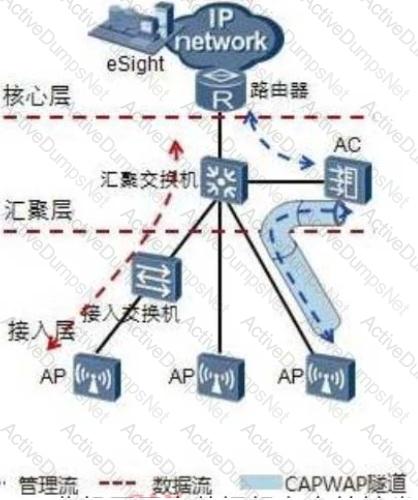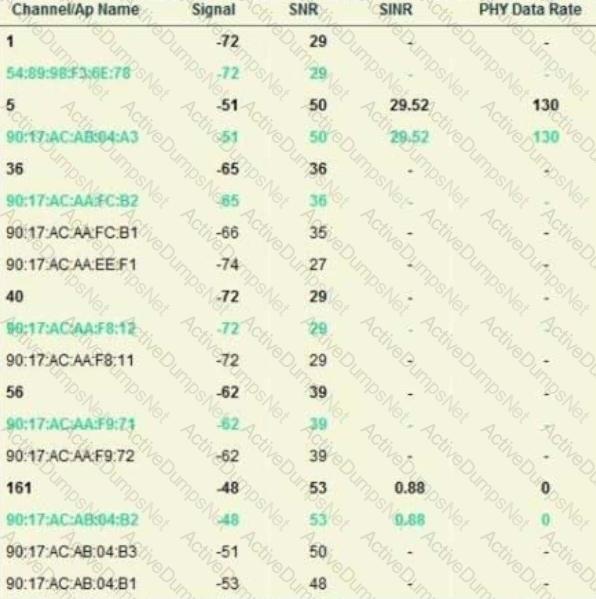Huawei H12-322 Huawei Certified ICT Professional - Wireless Local Area Network- Planning and Optimizing Enterprise WLAN Exam Practice Test
Huawei Certified ICT Professional - Wireless Local Area Network- Planning and Optimizing Enterprise WLAN Questions and Answers
The following figure is a typical WLAN networking diagram. Which of the following is correct about this figure?

What is the correct description of the CAPWAP broken link business retention function?
A WLAN campus network adopts the independent AC (ACU2/AC6605/AC6005) deployment mode. This method does not support the following reliability methods. case?
Which of the following RF modes can the 802.11bg NIC be connected to?
The following is true about the WLAN side-by-side networking.
Which of the following options are typical WLAN indoor-mounted coverage scenarios?
Which of the following APs support optical port data transmission?
In the WLAN Tester 2.0 tool, when a vendor group information is added to an AP packet in the global configuration, can one vendor correspond to several OUIs?
When the WLAN is covered outdoors, the following description is correct about the antenna hanging high?
The following is true about the WLAN actual site survey in the trace (network cable or fiber), power supply is correct?
What type of radio frame is used when the AP performs a counteraction against an illegal terminal?
The following is about using the AP6310SN to create a new WLAN room subsystem. What is wrong with this?
In the backhaul scenario where the AP6510DN is connected to the AT815SN in point-to-point, the return distance is about 100m. The six AT815SNs are distributed in a length of 60 meters and wide.
Within 60 meters, the equipment is installed at the same height and has a line of sight.
When the upstream bandwidth requires 10 Mbps and there is no EIRP limit, which of the following antennas can be selected?
Which of the following WLAN protocols can achieve a theoretical rate of more than 1G?
Which of the following is not a way to increase the range of coverage signal strength?
Which of the following two scenarios does the WLAN room sub-plan apply to?
In HT40 mode, the primary channel sends beacon packets and some data packets, and the secondary channel sends other packets.
In a certain room subsystem, using the AP9330DN, each incoming antenna can be set to a different channel to avoid co-channel interference.
In the active/standby dual-link scenario, the default CAPWAP heartbeat is set to?
Which of the following objects or materials has the highest penetration loss to WLAN signals?
In the WLAN Tester 2.0 heat map, the tip box displays the following information. According to the information in the figure, the following statement is correct?

The following is true about deploying the AP6310SN in the warehouse coverage (the AP is placed at one end of the warehouse, and the antenna feeders are not equal in length).
400mW = () dBm?
Which of the following is the best security method?
The 5dB coupler has a coupling degree of 5dB and an insertion loss of 2dB. If the input signal power is 17dBm, what is the output power of the coupling port?
Which of the following technologies can be used in a WLAN high-density deployment scenario?
The following options are incorrect about the WLAN forwarding mode description?
A WLAN engineer uses the WLAN Tester 2.0 tool for surveying. In order to quickly understand the coverage of the live signal, the following operations are correct.
The following description of the role of the coupler is wrong?
Which of the following options are the design principles for WLAN outdoor sites?
Which of the following networking methods are recommended for Mesh planning?
For WLAN outdoor coverage planning, what is the recommended coverage radius when using an external 2.4G 3dBi omnidirectional antenna?
What is the correct description of HSB below?
Which of the following options are characteristic of the business needs of high-density venues?
What is the time interval of Short GI?
Which of the following options is incorrect about the FIT AP description?
The following description of the BYOD networking of large enterprises is wrong?
What is the 2.4GHz signal attenuation of a 240mm thick concrete wall?
In the WLAN bandwidth design, the average bandwidth of the access users decreases linearly with the increase of the user.
A three-story office needs to plan a WLAN. After the site survey is completed, the engineer decides to place three APs on each floor. The letter about the three floors.
Is the road planning correct?
What is wrong about the description of antenna azimuth and downtilt below?
When the command "rate-limit client down 4096" is configured on the AC, what is the possible rate when the user downloads the Internet?
